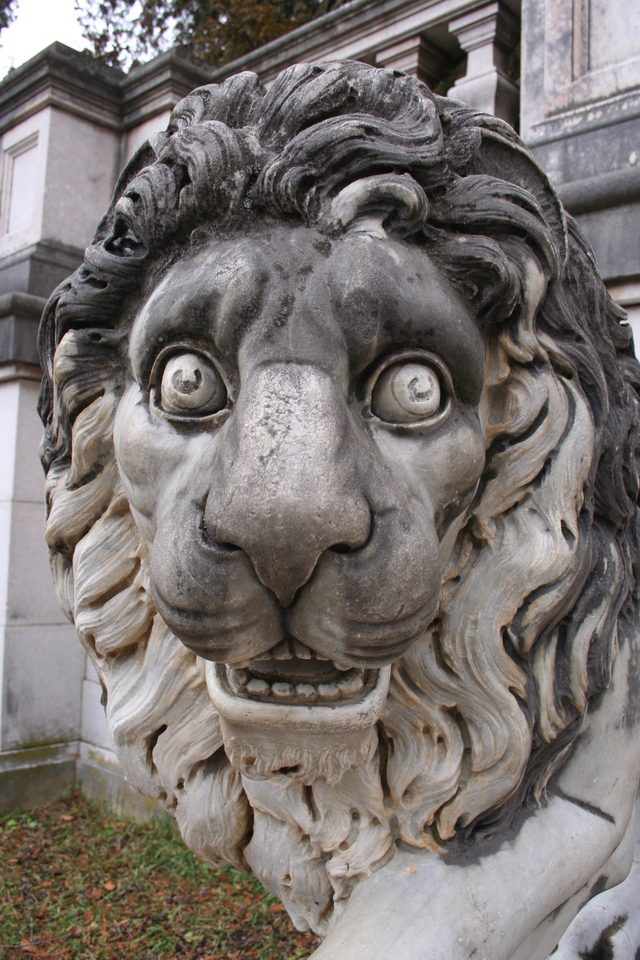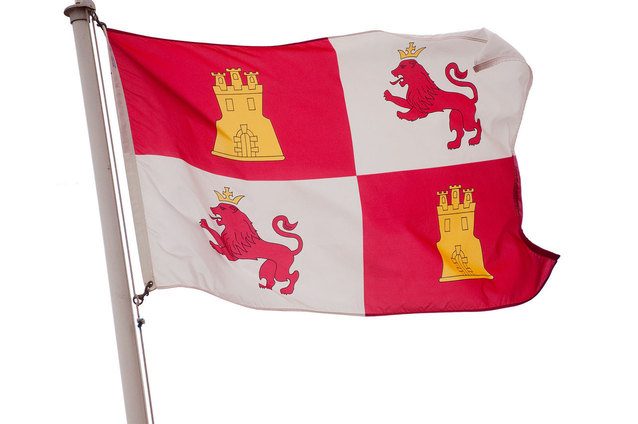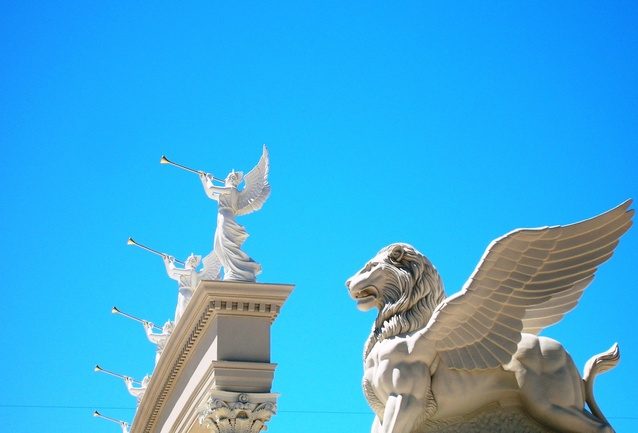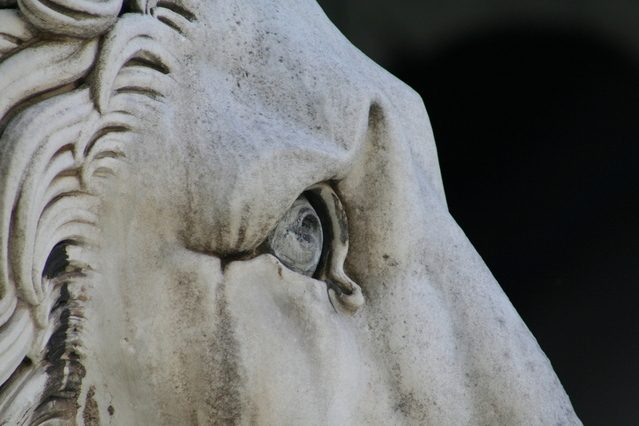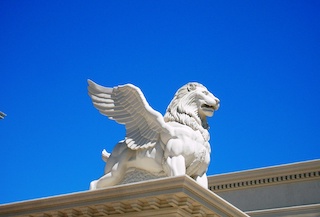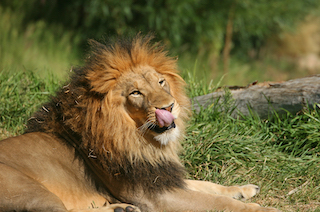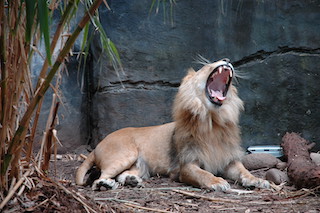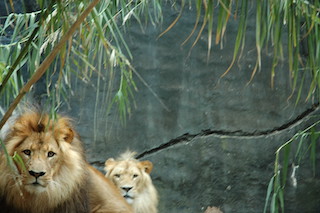Lion Depictions In Nations And Religions
Lion hunt
A lone lion finds it hard to catch a prey because the prey they choose to kill is faster and nimbler than the lions. They can also outrun a single lion. So, to increase their success rate, they hunt using teamwork and smart tactics to bring it down. They form hunting parties to attack the fast animals found in the savannahs. The group sets the hunting methods very well in a scientific and ruthless manner. They work to attack the prey by forming two groups. Each lioness sets her unique role for the success of killing.
Eating habits
A lion’s meal starts with the entrails such as the heart, kidneys, and liver. But this feral cat’s cuisine tastes vary widely. Some lions will not eat the stomach. Others show a liking for the intestines. Some male lions prefer the flesh and will eat the back side, which is the fleshiest part, while the females eat the entrails. The last part they touch is the head. It is very rare for them to open the skull. It’s fast-working system allows them to gorge an average of 18kg in one sitting, and go for seconds shortly after.
Lion numbers
Ages ago, lions were the most seen large land mammals after humans. But today there are only 20,000 lions in the wild. Out of that roughly around 2,000 remain in Kenya. But the country is losing around 100 of them on a yearly basis. Over the coming 20 years, it will lose 50% of them. In the past 20 years, its numbers have dropped by 50%. But some put the decline rate higher.
Decline
Lion threats vary across range, but there are a few major reasons for the decline. Firstly, the lion’s prey are dropping due to habitat loss as well as the growth of farming to feed the growing human population. It puts the lions into conflict with humans. Farmers kill lions that have attacked their livestock. Also, a growing trade in lions has fuelled hunting and lion poaching. Their bones are used in Asia. Although many lions are well-secured, many others lack any shields and will decline, if not fade, over the coming years. To save lions, people are working towards highlighting the value that exists in saving them.
Sick
Lions are prone to tick-borne diseases. They contract them by eating sick dogs coming from the nearby villages. They also occur when they are exposed to disease during droughts. These ailments has caused mass drop in lions. But it is human conflict that is the cause of the dropping rate of lion numbers. Because of this, Kenya Wildlife Service, with locals, has put in place some measures. Hence, three groups – Born Free, Lion Guardians, and American Fish and Wildlife Service – have built lion-saving plans.
Lion groups
The lion numbers in Kenya has been dropping due to diseases, drought and poachers and habitat loss. Rampant vices within the system has also added to this sorry state. This dwindling figures of lions has put conservationists to work to find out the causes. They mainly belong to the private sector. As a result, some groups have formed plans to protect and live with lions. Their total love and ardor to this cause is worthy. That is to say, thankfully, these plans to aid a peaceful living between humans and lions do bring in the needed results. So, 4 such lion saving bodies in Kenya are Born Free, Ewaso Lions Project, Warrior Watch and Lion Guardians.
Lion symbolism
People have used lions as a symbol for thousands of years. In some nations, lion causes fear. It wields great power and walks in silence. Lion stands for many things in many places and cultures. Depictions of lions are a millennium old. They appear throughout the globe. For instance, the Flag of Iran bore the Sun and Lion until 1979 from the year 1946. To dream a lion can mean a wary stance. You might have a risky state that has entered your life. It shows grasping feelings deep inside you. A lion in dreams also means having the chance to kill some of your issues. You should then get in touch with the feelings and tame them. Some people dream of lions when they get a feeling of being preyed upon by foes. Dreams of preying lion sometimes imply that you like to spend time alone.
Lion dreams
In the dream world, lion is the most pushy fighter in life. Lions are also signs of sway on people around them. In some cases, as presider over floods, the lion can stand for fertility. To see a lion in the jungle, means the need to be more honest and loyal in your affairs. And it gets more and more fun when you find out the hints of those readings.
Lion in dreams
Depending on the dream scenario, a lion can represent several things. To dream a lion can symbolize a defensive position. A lion in dreams also means having the skill to overcome some of your issues by getting in touch with the feelings and taming them, if necessary. Some people dream of lions when they get a feeling of being preyed upon by enemies. Dreams of preying lion also bring messages of self-sufficiency implying that you like to spend time alone because you are extremely free. The power comes naturally to a lion, and there is no false bravado because it is born powerful. A dream about lion is a reminder that each of us is born divine and powerful and to step into our birthright of strength. Its presence is a positive representation of personal power and self-confidence.
Dreaming tamed lions
Dreaming of a tame lion is a prompt to push you to change the way you do things because you have become too calm. It could be about your personal life or your old habits that no longer do you good.
Indication of authority
A lion is the beast of beasts and symbolizes clout over others. Either it could represent your desire to hold power over the people around you, or it could indicate someone has clout over you. Or it just reflects your liking to dominate at work or in relationships. A spirit lion indicates the need to either be in control of the times, or for you to control your aggressive impulses and temper. Be careful, though, not to become a control freak.
Siginificance of lioness
A female lion signifies hope, motherhood, sensuality, stamina, drive, and success. Some cultures revered her as a sacred animal of the goddess-mother and the provider for her pride. Lioness spirit is drawn to people who protect and nurture the weak. She teaches you how to get your family working more jointly and how to care for your pride. It also teaches it’s young how to fend on their own without leaving them exposed. Seeing a lioness in a dream means you fiercely protect those you love. It is also a signal never to give up and to keep going until you reach your goals.
Depictions
People have used lions as a symbol for thousands of years. In some nations, lion causes fear because of the power it wields. Similarly, lion symbolizes various things in different religions.
Depictions in nations
Depictions of lions are a millennium old and appear in nations across Africa, Asia, Europe and throughout the globe. The Flag of Iran bore the Sun and Lion until 1979 from the year 1946. The coat of arms of Netherlands, United Kingdom, Bulgaria, Canada, Czechoslovakia, India, Spain, and Sweden has lion depiction. Moreover, the cultural depictions of the lion are a global marvel found all over the world.
In ancient Egypt
In ancient Egypt, the lion is the brutal heat of the sun. For example, the Egyptian goddess called Eye of Ra who is the power that annihilates the wicked had lion features. Furthermore, the ancient Egyptian sphinx had a lioness’s body and head and shoulders of a human, which was a symbol of the goddess who shielded the Pharaohs in the afterlife. Later, they thought Pharaohs were the deity’s offspring and so they depicted Pharaohs as sphinxes.
Demigod
The playful goddess of guard and dance appeared as having the head of a lioness instead of a tamed cat. In addition, the fierce friend to children and women, Bast and Sekhmet’s son, Maahes, the war god, had lion likeness. Egyptian culture represents lion back to back facing west and east to track the sun’s movement across the sky, symbolising tomorrow and yesterday, as well as rebirth and death, at the same time.
In Great Britain
The meaning of lions in Britain is shown in heraldic art as an emblem of British sovereigns because of the lion-like traits such as bravery, honour, leadership, royalty and strength. The lion is common in heraldry appearing either as puissant, rampant, curled up, standing, or rearing on the hind legs. Some iconography separates the lion symbol into two types.
In ancient Greece
Ancient Greek myth indicates that the king of beasts drew the chariots for their gods and goddesses such as Artemis, Cybele, Dionysus, and Phoebus. Greek myth links lion to Heracles and the epic wrestling match with a lion, which no weapon on earth could harm. In other words, the animal is death, killed by the solar hero with his bare hands after which Heracles wore its skin as armour.
Guards
Lions are known for its stalwart fearlessness and hence were viewed as vigilant guards even of the dead. Their statues are in the entrances of buildings and doorways of palaces, thrones, and shrines. Here, the symbolic meaning revolved around protection.
In Middle East
Middle Eastern art and stories show the lion as high kings. That is to say, the goddesses and gods in this region had lion companions. Examples include Inanna who stands on two female lions’ backs and Ishtar with a chariot that is lion-drawn alluding to the feline as an emblem of buff and strength. The connection strengthens when we see the entrance to temples and great cities with flanking statues and lion gates as protectors.
In Native American
For the Hopi, the lion is a sacred guardian of the tribe whom they look for advice during rituals. To clarify, they depict him as a hunter who is fearless and vigorous in the face of challenges. For the Navajo tribes, the lion spirit is a guardian and protector.
Depictions in religions
Just as nations, most cultures use the lion in a figurative sense. Therefore, the lion appears in the stories of tribes as a wise leader who leads with confidence, as a frightening king, courageous soldier, vicious leader, destructive enemy nation, and stealthy personal enemy. For instance, according to African tribal legends, the lion never shuts his eyes when it sleeps. Thus, it symbolises cunning, strategy, brain and wariness. This pot-bellied lion is a symbol of blind greed.
In Chinese Buddhism
Chinese Buddhist portray the king of beasts as a being of great majesty. They believed that lions safeguard humans from demons and ghosts. Therefore, the buildings throughout the country includes lions at entryways, standing guard. The Buddha sits upon the lion as a throne of wisdom, strength and consistency. In one of the lives, Buddha looked like a lion.
In Christian context
The lion is a symbol of the power of God in a Christian context. To most Christians, the lion can be the might and power of Christ or the open orifice of Satan. It represents Jesus’ human and divine natures through the lion. The religion assigns the front half the majesty of Christ’s holy nature, and the weaker hindquarters Christ’s mercy.
Conversion and resurrection
The symbolism of lions also deals with conversion and resurrection in Christianity. The meaning comes from the observation of lion cubs. People believed that the young of lions were born dead and that they came alive when the father lion passed its breath upon it. It was symbolic in Christianity as the father lion represented Jesus Christ and his breath represented the spirit flowing into the children awakening their minds to God’s light.
In alchemy symbol
As an alchemy symbol, the symbolic lion takes on many representations. They gave the symbolic lion the highly prized and idealistic attributes of gold as well as the untreated raw material. In alchemy texts, a green coloured lion indicates matter which is the starting point of change. When seen in red, the alchemical lion means Sulphur which speaks about the eternal wish to reach nirvana and the range of human nature.
In zodiac signs
In soothsaying, the lion indicates the zodiac sign of Leo. They are a proud lot and know their place in the world. They have a natural knack for leadership skills. Leos can come on as very assertive. This mellows in older age when they become more easy-going and playful.
Leo
Those born under the zodiac sign Leo are in control, fiercely free and confident with a quiet demeanour. Most Leos tend to be influential and creative with the power to make positive changes in themselves and the lives of others. Leos have a strong sense of community and family and gain a sense of place within their groups. Leo is a very loyal person and will defend family honor and friend to the death.
5 bFrequently bAsked Questions About Lion Depictions
To receive a colourful digibook about lion with videos, images and text, please fill out the following form or simply email us on safaris@safari-center.com

